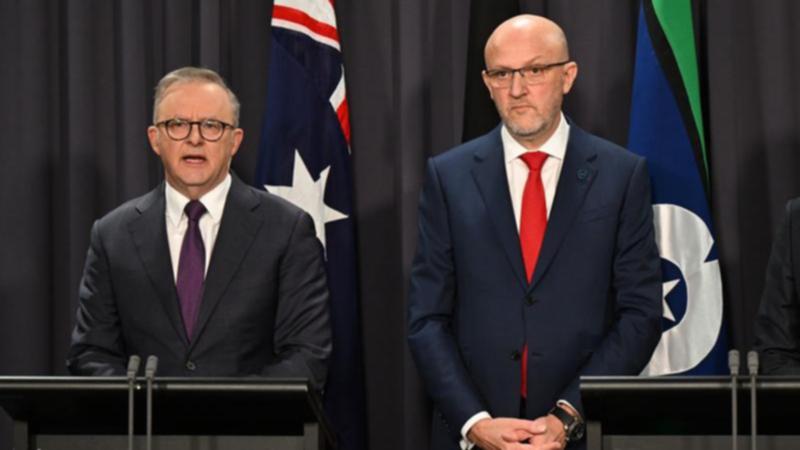Why has Australia’s terror threat risen from possible to probable? Five things you need to know

Today, Australia’s domestic terror threat level has increased from possible to probable.
Here’s what you need to know.
What is the National Terrorism Threat Advisory System & National Terrorism Threat Level?
Sign up to The Nightly's newsletters.
Get the first look at the digital newspaper, curated daily stories and breaking headlines delivered to your inbox.
By continuing you agree to our Terms and Privacy Policy.The National Terrorism Threat Advisory System provides advice about the likelihood of an act of terrorism in Australia. It informs what safety measures individuals, businesses and authorities need to take. It also informs the Government’s national security preparedness and response training.
There is a scale of five levels: certain (red), expected (orange), probable (yellow), possible (blue), and not expected (green).
Australia’s National Terrorism Threat Level was raised from ‘possible’ to ‘probable’ on Monday. This means security officials believe “there is a greater than fifty per cent chance of an onshore attack or attack planning in the next 12 months”, according to the official advisory.
The threat level is used as a warning tool to let the Government and public know what trends and changes in society the Australian Security Intelligence Organisation (ASIO) is noticing and what it anticipates may happen in the near future.
Why has the level been raised?
The threat level has been raised because the danger of politically motivated violence has increased.
ASIO is observing the emergence of individuals “driven to action by socio-political issues, intersecting with personal grievances”.
The organisation states there’s an increase in extremism, fuelled by conspiracy theories and anti-authority ideologies. Some individuals have a blend of ideologies, including those that justify acts of violence to influence change.
Unlike when the threat level was raised in 2014 in response to the Islamic State (ISIS), the threat now is the culmination of escalating risks posed by anti-government conspiracy theorists, frustration from the COVID-19 response, and deteriorating social cohesion and domestic tensions around the war in Gaza.
Agencies are particularly concerned by how quickly people are becoming radicalised, a threat exacerbated by social media.
This is all intensified by worrying trends such as trust in governments lowering and democratic processes globally eroding.
What is politically motivated terrorism?
The head of ASIO, Mike Burgess said politically motivated violence encompassed terrorism but was broader than that — and covered any violent act or any violent threat intended or likely to achieve a political objective.
“This includes violent protests, riots, and attacks on a politician or democratic institutions,” he said.
“Unfortunately, here and overseas, we’re seeing spikes in political polarisation and intolerance, uncivil debate and unpeaceful protests. Anti-authority beliefs are growing, trust in institutions is eroding, provocative inflammatory behaviours are being normalised.”
Should we be scared?
The head of ASIO, Mike Burgess, said Australians “should be aware but not afraid”.
“Politically motivated violence now joins espionage and foreign interference as our principal security concerns,” he said.
Prime Minister Anthony Albanese said the change in threat level did not mean a terrorist attack was “inevitable”, nor was there an “imminent threat or danger”.
“But the advice that we have received is that more Australians are embracing a more diverse range of extreme ideologies and it is our responsibility to be vigilant,” he said.
“When the temperature of the security environment is rising, we must lower the temperature of debate — something I’ve been saying for some time.
“Our words and our actions matter.”
What might a terrorist attack look like in Australia?
The advisory states an attack in Australia would likely happen with “little to no warning” and be “low-cost, using readily available weapons, and simple tactics”.
The terrorists would potentially have basic weapons — knives, explosives, vehicles, firearms — and choose to target a crowded place, in a major city, including shopping centres, transport hubs or symbolic locations.
What the public can do:
The Government has advised it’s important for everyone to stay aware and to immediately report any suspicious activity to the National Security Hotline by calling 1800 123 400.
Life-threatening situations should be reported to the police by calling triple zero (000).
